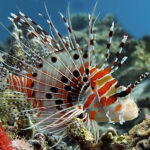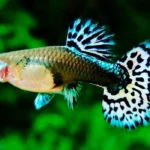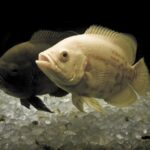Fish Diseases and Treatments As one who’s spent many hours gazing in awe at fish swimming peacefully in tanks and ponds, I can attest with absolute certainty that fish are more than mere decoration—they’re an image of the aquatic environments we strive to duplicate. Fish Diseases and Treatments. But just like any pet, fish will eventually get sick. And when that happens, it’s on us to figure out what’s wrong and how to correct it.
This guide is not composed from a book but from the real-world experience of fishkeepers, hobbyists, and caretakers who learned the hard way what’s necessary to maintain healthy fish. We’re going to explore fish diseases and treatments—not enumerating them, but taking you through what it actually feels like when you see something’s wrong and how to react in time. Let’s do it, fish diseases and treatments.

The First Signs—Trust Your Instincts
All you experienced fishkeepers will attest: you get a sixth sense. You glance over your tank, and you can tell something’s amiss. A fish won’t eat. Another lingers near the heater. One may be hiding in a corner and not interacting with the others. That intuition? Fish diseases and treatments are rarely wrong.
Things to watch for
Sudden color changes
Erratic swimming
Gasping at the surface
Clamped fins
Loss of appetite
These are not quirks; they’re pleas for assistance. Being attuned to your tank’s daily cycle is the first step in early detection.
The Usual Suspects—Common fish diseases and treatments explained
Let’s go through some of the most prevalent fish diseases and treatments you may find. I’ll tell you what they are, what they look like, and what I’ve done personally to deal with them.
Ich (White Spot Disease)
That’s Ich. It’s due to a protozoan parasite that reproduces rapidly in hot water.
Symptoms:
White spots
Rubbing against objects
Rapid breathing
Treatment:
Gradually raise water temperature to 82–86°F
Use a commercial Ich treatment
Perform partial water changes daily
Fin Rot
I used to have a gorgeous betta with colourful fins until they began to fray at the ends. Fin rot is usually bacterial but can be fungal.
Symptoms:
Frayed or ragged fins
Red or bloody edges
Treatment:
Improve water conditions
Use antibacterial medication like Maracyn
Consider salt baths
Dropsy
This is probably one of the saddest. Your fish resembles a balloon with scales protruding like a pinecone. Dropsy is a sign of internal problems, not an illness in itself.
Symptoms:
Swollen belly
Pinecone-like appearance
Lethargy
Treatment:
Isolate the fish
Antibiotic treatment (e.g., Kanaplex)
Improve diet and reduce stressors

Parasites—The Invisible Threat
Parasites are devious. They creep into tanks with new fish, live plants, or decorations. They become entrenched in your tank after they arrive.
Velvet
This illness is caused by gold dust or rust covering the fish.
Symptoms:
Golden shimmer on skin
Loss of color
Scratching against objects
Treatment:
Dim the lights
Use copper-based treatments
Raise the water temperature
Anchor Worms
Symptoms:
Worms hanging from the skin
Red inflammation
Treatment:
Remove worms manually with tweezers
Use antiparasitic meds like Dimilin
Disinfect the tank
Fungal Infections—The Cottony Invaders
Fungal fish diseases and treatments frequently attack stressed or injured fish. They look like fuzzy white or grey growths.
Treatment:
Isolate affected fish
Use antifungal treatments like Pimafix
Improve tank hygiene
Prevention—The Best Medicine
After years of owning fish, here’s my golden rule: a clean tank is a safe tank. With good care, most diseases can be prevented.
Preventive Measures:
Quarantine all new fish for 2–4 weeks
Don’t overcrowd your tank
Regular water changes (20-30% weekly)
Don’t skip filter maintenance
Feed high-quality, varied diets
Also, check on your fish every day. That 5-minute visit is your best defence.
Quarantine and Hospital Tanks
You may consider it overkill to set up a separate tank, but believe me, it has saved my main tanks more than once.
Setup:
Small tank (10-20 gallons)
Sponge filter
Heater
No substrate
Use it to quarantine new introductions or nurse sick fish without putting your whole aquarium at risk.

Medication Cabinet—What to Keep on Hand
Recommended Supplies:
Aquarium salt
Methylene blue
Ich treatment
Broad-spectrum antibiotic
Anti-parasitic medication
Test kits (ammonia, nitrite, nitrate, ph)
Having these on hand means you can move quickly.
Preventing Fish Diseases
Maintain Water Quality
Regular water changes (20–30% weekly)
Proper filtration and aeration
Monitor ammonia, nitrite, nitrate, and pH levels
Avoid Overcrowding
Research species compatibility
Provide adequate space and hiding spots
Quarantine New Additions
Minimum 2-week quarantine for new fish or plants
Treat preventively for parasites if needed
Feed a Balanced Diet
Vary diet with pellets, flakes, frozen, and live foods
Avoid overfeeding—feed small amounts once or twice daily
Observe Daily
Check for unusual behavior or physical changes
Remove sick fish promptly to prevent the spread
Clean Equipment
Disinfect nets and tools between tanks
Avoid cross-contamination
Knowing When to Let Go
Occasionally, nothing matters, and the fish just don’t make it. This is the most difficult aspect of keeping fish.
Signs it’s time to consider euthanasia:
No response to treatment
Severe suffering or pain
Humane Method:
Clove oil bath (euthanises gently in sleep)
It’s not easy, but killing suffering sometimes makes us the most compassionate people.

Conclusion
Every aquarist, regardless of experience, encounters disease. What is most important is how you react—with urgency, compassion, and the will to learn from each experience. Fish diseases and treatments.
Your fish are counting on you. With the information in this guide and a little vigilance, you can head off most ailments and cure the rest successfully. Remain vigilant, remain compassionate, and never cease learning.
Health in the fishkeeping world is not a luxury—it’s an obligation.
How do I know if my fish is sick or just stressed?
It might be difficult, but look for consistency. If your fish is hiding, refusing to eat, or exhibiting abnormal behavior routinely, it’s probably something beyond stress. Consult water parameters first—dissatisfactory water quality is usually the underlying cause of both stress and sickness.
Can I treat my whole tank if I’m not sure which fish is sick?
Yes, in most instances, it’s safer to treat the whole tank, particularly for quick-spreading conditions such as Ich. Nevertheless, always look up the medication to verify it’s safe for every inhabitant of the tank, including delicate animals such as shrimp or scaleless fish.
Do I really need a quarantine tank?
Yes. A quarantine tank prevents breakouts in your main aquarium. It’s a small space and time investment that can save your whole school of fish in the future. It’s like insurance for your aquatic community.
Can I use salt to treat fish diseases?
Yes, but don’t overuse it—some fish (such as catfish or loaches) are sensitive to salt. Always use dosage instructions as a guide.
What’s the best way to prevent fish disease?
Clean water, a stress-free environment, and adequate quarantine are your best defenses. Don’t overcrowd, feed a varied, high-quality diet, and do regular water changes. Prevention is always simpler—and less expensive—than treatment.










